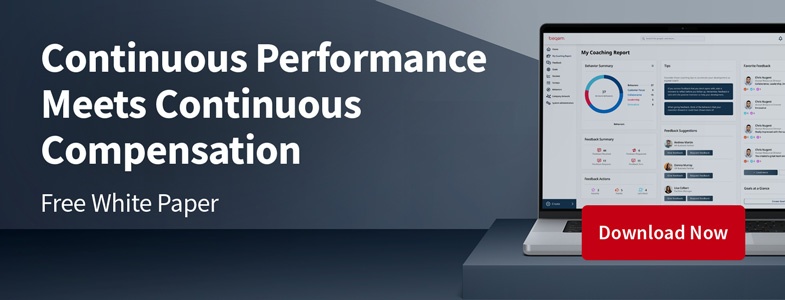Goals With a Greater Purpose

Learn more about the following beqom products
There’s been much written about the greater need for meaning and purpose in the workplace, and the process of goal-setting is perhaps the biggest opportunity for us to facilitate this.
How can we create goals that inspire, and also accomplish our business objectives?
Traditionally goals have been about capturing those everyday requirements to do your job effectively, or those stretch assignments that ask more than the job itself and require you to go above and beyond. The question we need to ask ourselves is this: how can we make those goals meaningful and drive purpose, to inspire our people to remain interested and engaged in our mission?
Alignment is nothing without motivation
One of the most impactful ways to give meaning to our goals is to align them with a greater purpose, one that helps us feel part of a community and something bigger than ourselves. Traditionally, this has been achieved by cascading organizational goals throughout the organization and aligning individual goals with them. While this has been somewhat effective, it’s also been arduous.
In a global organization of 50,000 employees or more, the cascade process can be slow and by the time the organizational goals make it down to the individual employee on the front lines of the organization, they can seem irrelevant or even outdated. Or, they can make the employee feel like just a little cog in a big machine. The goals may be aligned, but the employee is not left empowered and motivated. So how can we overcome some of the challenges with this approach?
Can goals be crowdsourced?
One of the strategies gaining a lot of momentum, particularly since the pandemic, is the “bottom-up” approach. This involves publishing the broad goals to everyone in the organization and facilitating employees to create their individual goals and report back upwards. It’s kind of like crowdsourcing. An approach like this eliminates the need for the CEO to cascade the goals down to the VPs, and then for the VPs to further cascade them.
Bottom-up goal setting involves collaboration between employees and their supervisors or managers. Employees are encouraged to take the initiative and set their own goals, and then work with their managers to align those goals with the department and organization's overall objectives.
This helps employees understand the relevance of what they are doing and how it relates to the bigger picture. This in turn can help employees feel more empowered and engaged in their work. When employees are given the opportunity to set their own goals, they are more likely to feel a sense of ownership and accountability for their work. This can lead to increased motivation and productivity, as well as a greater sense of fulfillment in their work.
The result may be better goals
In addition to the motivational benefits of goal authorship, employees often may have better ideas about how to accomplish the overall goal. As the ones closest to the work and closest to the customers, they may be in a better position to determine the best method to get to the desired end result, more efficiently and effectively. There is less pressure on managers to figure out what the people below them need to do to accomplish the mission.
The bottom-up approach also can result in a more collaborative and productive work environment, where everyone is working towards a shared vision with goals that are more closely aligned with their individual strengths and abilities.
Finding purpose and meaning
Finally, bottom-up goal setting can help employees feel a greater sense of purpose by giving them a voice in the goal-setting process. When employees feel that their opinions and ideas are valued, they are more likely to feel a sense of purpose and meaning in their work. This can lead to increased job satisfaction and higher levels of employee engagement, which can have a positive impact on the organization as a whole.
Having meaningful goals is important, and a good place to start is by connecting goals to a “why”. Simon Sinek says great leaders inspire action by “starting with the Why.” If you don’t know why you are doing what you are doing, then the “what” and the “how” are irrelevant, since you might be very efficiently doing something that is a waste of time.
Stephen Covey talks about starting with the end in mind. According to Covey, one of the key ways to find meaning and purpose in work is to align personal values and goals with the organization's mission and objectives. Working hard for the sake of working hard is pointless. Or as Covey says, “It's incredibly easy to get caught up in an activity trap, in the busy-ness of life, to work harder and harder at climbing the ladder of success only to discover it's leaning against the wrong wall.”
Bottom-up goals are effective in facilitating employees to understand that their goals are part of a community of goals that are helping to drive a wider purpose. From there, one can see the links to the importance of what they do, thus giving greater meaning and purpose to the employee.
Supporting employees in their success
Once goals are set, getting coaching, feedback, and encouragement along the way can help immeasurably in helping employees be successful and stay motivated. The right incentives can reinforce alignment and reward success.
To find out more about creating an inspiring employee experience and supporting your workforce in owning their goals and development, contact us at beqom and ask about our continuous performance and rewards solutions.








